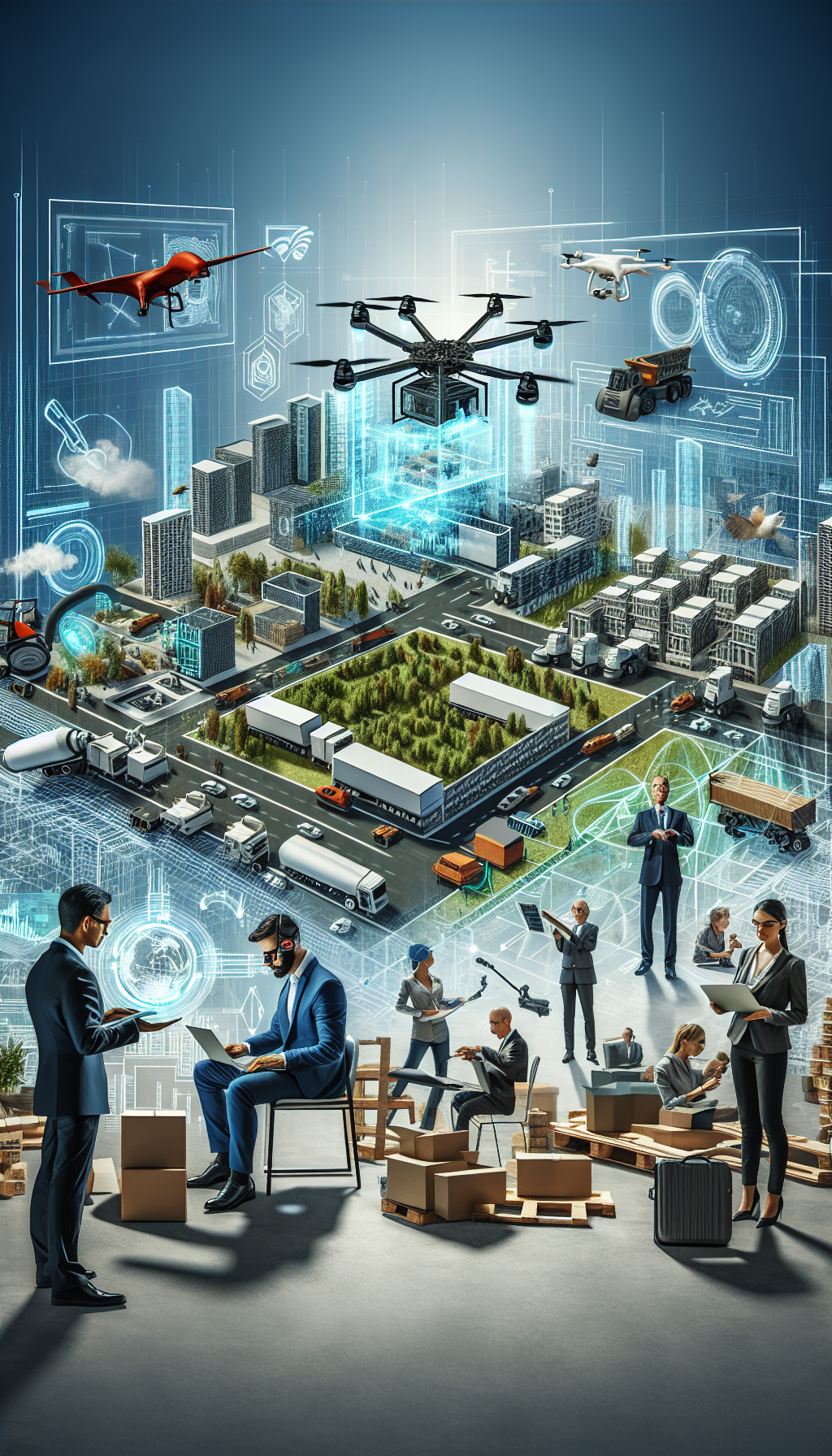American Supply Chain Innovations: Transforming Property Developments for Enhanced Efficiency
1. The Evolution of Supply Chain Management in Property Development
The property development industry has experienced massive transformation over the years, especially with advancements in supply chain management (SCM). Traditionally reliant on manual processes, the sector is now embracing technology-driven solutions for improved efficiency. Innovations like just-in-time (JIT) delivery, automated inventory management, and data analytics have become indispensable tools for developers aiming to streamline operations and reduce costs.
2. Technologies Driving Supply Chain Innovations
2.1 Building Information Modeling (BIM)
BIM is a revolutionary technology that enhances visualization and coordination among stakeholders in property development. By creating 3D models that encapsulate detailed building specifications, developers can identify potential conflicts early in the design phase, reducing costly changes during construction. Utilizing BIM not only minimizes material waste but also optimizes labor deployment, ultimately saving time and resources.
2.2 Internet of Things (IoT)
IoT technology significantly advances SCM by enabling real-time tracking of materials and equipment through smart sensors. These devices provide insights into supply chain operations, allowing developers to monitor material usage and equipment location efficiently. For instance, IoT-connected construction machinery can alert operators when service is required, minimizing downtime and ensuring projects remain on schedule.
2.3 Blockchain Technology
Blockchain’s decentralized ledger system provides an unparalleled level of transparency and security in property transactions. By allowing all parties—developers, contractors, and suppliers—to access shared project data, blockchain enhances collaboration and accountability. Smart contracts can automate transactions, reducing inefficiencies due to paperwork and improving trust among stakeholders.
3. Streamlining Procurement Processes
3.1 Digital Procurement Platforms
Digital platforms revolutionize procurement processes by facilitating streamlined communication between developers and suppliers. These platforms automate the sourcing process, enabling developers to compare different vendors based on price, delivery times, and product quality. This level of transparency ensures the selection of the best suppliers while also fostering healthy competition, driving down costs.
3.2 Vendor Relationship Management
Innovative supply chain processes emphasize long-term relationships with trusted suppliers. Building vendor relationships based on collaboration instead of transactional exchanges can lead to better pricing, improved service levels, and priority during peak times. Co-developing projects with suppliers also opens pathways for innovative solutions tailored specifically to the needs of developers.
4. Inventory Management Advancements
4.1 Just-in-Time Inventory
Just-in-Time (JIT) inventory management minimizes waste and reduces holding costs by ordering materials only as needed. This method allows developers to maintain lean inventories, which translates into significant cost savings. By integrating JIT with predictive analytics, developers can anticipate material needs more accurately, further enhancing efficiency.
4.2 Automated Inventory Tracking Systems
Automated inventory tracking systems utilize barcodes and RFID technology to provide real-time data on inventory levels. Unlike traditional methods, these systems eliminate human error and reduce the time spent on stock checks. Developers can easily track materials in transit, ensuring that projects are supplied adequately and on schedule.
5. Enhanced Communication and Collaboration
5.1 Cloud-Based Project Management Tools
Cloud-based tools have transformed how property developers collaborate. By utilizing platforms that allow real-time updates and data sharing, teams can work more cohesively regardless of geographic locations. This immediate access to project information ensures everyone stays informed, mitigating misunderstandings and delays.
5.2 Collaborative Planning Sessions
Increasingly, developers are hosting collaborative planning sessions early in the project lifecycle. These sessions bring together architects, contractors, suppliers, and other stakeholders to collectively discuss project timelines, supply requirements, and potential challenges. This proactive approach not only enhances transparency but also aligns the goals of all parties involved.
6. Sustainability and Supply Chain Innovations
6.1 Eco-Friendly Materials Sourcing
As environmental concerns gain prominence, sourcing sustainable materials has become vital for property developers. Supply chain innovations allow developers to evaluate suppliers based on their sustainability practices, ensuring compliance with green building standards. By prioritizing eco-friendly materials, developers can reduce their environmental impact and appeal to a market increasingly focused on sustainability.
6.2 Waste Reduction Techniques
Innovative supply chain practices such as modular construction and prefabrication help minimize waste generated on job sites. By utilizing these methods, developers can produce components off-site and then transport them for assembly, leading to optimized use of resources and reduced waste.
7. The Role of Big Data in SCM
Big data analytics plays a critical role in enhancing supply chain efficiencies within property development. By analyzing historical data related to past projects, developers can make informed decisions about material sourcing, labor needs, and project timelines. This data-driven approach enables developers to anticipate challenges and streamline operations more effectively.
8. Future Trends in Supply Chain Innovations
The American property development landscape is continually evolving, with several trends likely to shape the future of SCM.
8.1 Artificial Intelligence (AI) and Machine Learning
AI and machine learning will further revolutionize supply chain management, enabling predictive modeling and advanced analytics. These technologies can assist developers in making smarter procurement choices and anticipating market fluctuations, contributing to more resilient supply chains.
8.2 Robotics and Automation
The introduction of robotics in construction is on the rise. Automated machinery can optimize processes, from material handling to construction tasks, increasing productivity on-site. Developers who adopt these technologies can expect faster turnaround times and higher quality outcomes.
8.3 Enhanced Focus on Cybersecurity
With the digitization of supply chain processes, cybersecurity becomes critical. As property developers leverage technologies such as blockchain and IoT, investing in robust cybersecurity measures will safeguard sensitive information and foster trust among stakeholders.
9. Conclusion
Utilizing American supply chain innovations within property development not only enhances operational efficiency but also promotes sustainability and adaptability in an ever-changing market. As technology continues to advance, embracing these innovations will be key for developers seeking to remain competitive and fulfill the expectations of a growing clientele focused on efficiency and sustainability.

